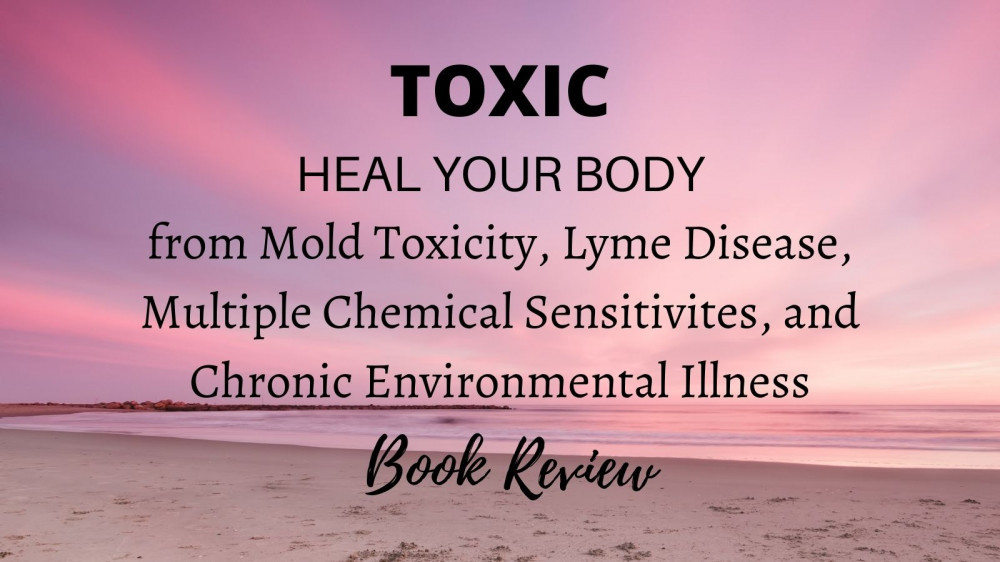I’ve recently read an amazingly informative book that I’d like to share with you today. It’s called “Toxic – Heal your Body from Mold Toxicity, Lyme Disease, Multiple Chemical Sensitivities, and Chronic Environmental Illness by Neil Nathan, MD. This book is jam-packed with information from a doctor that has unique insights into caring for patients with complex, chronic illnesses.
Table of Contents
Chronic Illnesses
Chronic illness is a loaded gun in our medical paradigm of prescription medications and surgery, particularly complex illnesses like Lyme disease, and conditions caused by environmental toxins. Unfortunately, people dealing with these debilitating diseases are often dismissed due to the nature of their symptoms, which are intractable and long-standing.
Prescription drugs and surgery don’t address the underlying causes of chronic disease, and therefore, do little to improve health and quality of life. Patients with extreme sensitivity are notoriously hard to diagnose and treat.
“Toxic – Heal Your Body….” is a beacon of hope for people suffering from these “mystery” illnesses, many of which have been told what they’re experiencing is “all in their heads.” Dr. Nathan shares his understanding of the most common causes of these conditions, and why certain protocols are ineffective.
Dr. Nathan is Board Certified in Family Practice and Pain Management, is a Founding Diplomate of the American Board of Integrative Holistic Medicine, and is on the board of the International Society for Environmentally Acquired Illness (ISEAI). You can visit his website here.
Affiliate links ✔️
Extreme Sensitivity and Toxicity
In this book, research is shared on how toxicity and extreme sensitivities develop, how the two differ, and how they work synergistically within the body. Also included, is an in-depth explanation of the five primary causes of sensitivity and toxicity, and their corresponding effects on physical, emotional, and spiritual well-being.
1. Bartonella (a co-infection of Lyme disease): Lyme disease is an infectious disease that is hard to treat, and even trickier to diagnose. Not only does the bacteria, with Bartonella being a main player, and co-infections need to be eradicated, the toxicity that accompanies the disease also needs to be addressed, along with its impact on body systems.
Lyme disease is a primary contributor to other chronic inflammatory conditions and is widely complicated in its scope. Many factors need to be taken into account, such as exposure, individual chemistry, and genetics in order for healing to occur.
Treating Lyme solely does not result in recovery, rather a number of factors need to be addressed, ranging from hormonal imbalances, sleep apnea, liver and gallbladder dysfunction, heavy metal toxicity, environmental toxins, and spiritual and emotional issues.
2. Mast Cell Activation: MCAS – Mast Cell Activation Syndrome – presents in multiple and varied ways, with fluctuating symptoms, including depression, intense anxiety, brain fog, pseudoseizures, tinnitus, debilitating fatigue, air hunger, difficulties with balance, interstitial cystitis, and insomnia. Sadly, this syndrome is not on most psychiatrists’ radar.
Mast cells are white blood cells within the immune system that act as a bridge between the nervous and immune systems, coordinating the two. Their job is to protect the body from infectious agents and toxins. They are found in all tissues, but most densely in the GI, genitourinary, and respiratory tracts, skin, throat, and sinuses.
Significant weight gain while eating a restricted diet, severe food reactions, ultra-sensitivity to a wide range of stimuli, accompanied by strange neurological symptoms are also part of the picture. Recognizing and treating this condition, in conjunction with other chronic illnesses, can be a game changer in regard to symptom-alleviation.
“If people want to get well, I believe that there is a healing path for them.”
Dr. Neil Nathan
3. Mold: Biotoxin illness is more prevalent than you would imagine. All it takes is exposure to a water-damaged building and the subsequent mold overgrowth. The condition is under-diagnosed, and presents as psychiatric symptoms, including anxiety and depression, brain fog, problems with attention and focus, and insomnia.
Symptoms are diverse and varied, and are implicated in histamine intolerance, IBS, leaky gut, mast cell activation syndrome, chronic fatigue, vagal nerve dysfunction, limbic dysfunction, and an increased sensitivity to food, light, sound, and chemicals.
4. Carbon Monoxide Poisoning: Carbon monoxide is a toxin that affects the red blood cells. During poisoning, carbon monoxide replaces oxygen within the cells, depriving the body of vital oxygen.
When mitochondria are exposed to infectious agents or toxins, the cell will automatically shut down in an orchestrated manner. These biochemical changes can lead to chronic illness beginning at the cellular level, which then translates into illness at the body level.
5. Porphyria: The condition is caused by a build-up of porphyrins, which accumulate in the body due to a deficiency of liver enzymes that prevent heme (hemoglobin) from being recycled. Secondary porphyria is caused by an infectious toxin, is more common than generally realized, and impacts people with Lyme disease.
Symptoms are similar to mold toxicity, PANDAS, Lyme disease, and mast cell activation. Porphyria initiates a series of inflammatory biochemical reactions that can affect every system in the body, manifesting as gastrointestinal and psychological disturbances, such as vomiting, nausea, severe anxiety, panic, and depression.
“If people want to get well, I believe that there is a healing path for them.” Dr. Nathan
The Stress Response
The fascinating topic of cell-danger response is outlined, along with a detailed explanation of how the body gets trapped into defending against a threat, even when the threat is no longer present. When defense systems don’t turn off, the body gets stuck in a “fight-or-flight” response, which prohibits it from being able to restore homeostasis.
Dr. Nathan shares his system-by-system approach for rebooting the body to enable healing, while breaking the cycle of illness. As someone that has suffered from mold toxicity, I can attest to the insidiousness and complexity of these types of illnesses. I have found his insights to be refreshing and invaluable.
Restoring Health
Dr. Nathan delves into his treatment model that resembles the rebooting of a computer. Systems within the body must be rebooted to resume normal function. Systems include the immune, detoxification, nervous, endocrine, methylation, metabolic and GI systems.
Reducing the stress-response and sensitization to environmental stimuli is also key. Normal strategies to restore function fail to work until the cell-response danger is quieted down, after which the patient will respond to treatments that will restore wellness. The success of this approach lies in the fact that health begins at the level of the cell.
Key Points
I would highly suggest purchasing this book if you’re looking to understand your own chronic symptoms that have not been helped using a conventional approach. This book is written in a concise and detailed manner. It will cause you to think outside the box, while instilling much-needed hope.
If you have any type of chronic/complex illness, including autoimmunity, heavy metal toxicity CIRS, biotoxin illness, chronic Lyme, chronic fatigue, fibromyalgia, or chronic pain, I’m certain you’ll find this book extremely helpful. It may be the missing puzzle piece you’ve been searching for.
Are you or someone you love afflicted with any of the illnesses mentioned in this post? Please share your experience in the comments?
References:
(1) Psychology Today: Mold Toxicity: A Common Cause of Psychiatric Symptoms
(2) NeilNathanMD.com: Newsletter #26 10 Common mistakes in the diagnosis and treatment of mold toxicity
(3) NeilNathanMD.com: Newsletter #6: Porphyia…Another Elephant in the Room?
(4) Neurohacker Collective: HOW TO HEAL FROM COMPLEX AND CHRONIC DISEASES
(5) Psychology Today: Mast Cell Activation Syndrome: An alert to Psychiatrists
(6) NeilNathanMD.com: Newsletter #15 Why Can’t I get Better
(7) BioDesign Wellness Center: Recommended Reading: TOXIC, by Neil Nathan, MD


Thinking outside the box has mostly proven to work for things that conventional thinking tries to suppress and it ends up festering and causing harm in some cases. I will look into the book. I have also been looking into Chinese Traditional Medicine and healing and this is another addition. Thank you for the review.
Hi Chika,
Thanks for reading my book review. It’s a great book. Very comprehensive and detailed. The author definitely thinks outside the box. Do check it out when you have time. Thank you for taking the time to leave a comment – much appreciated!